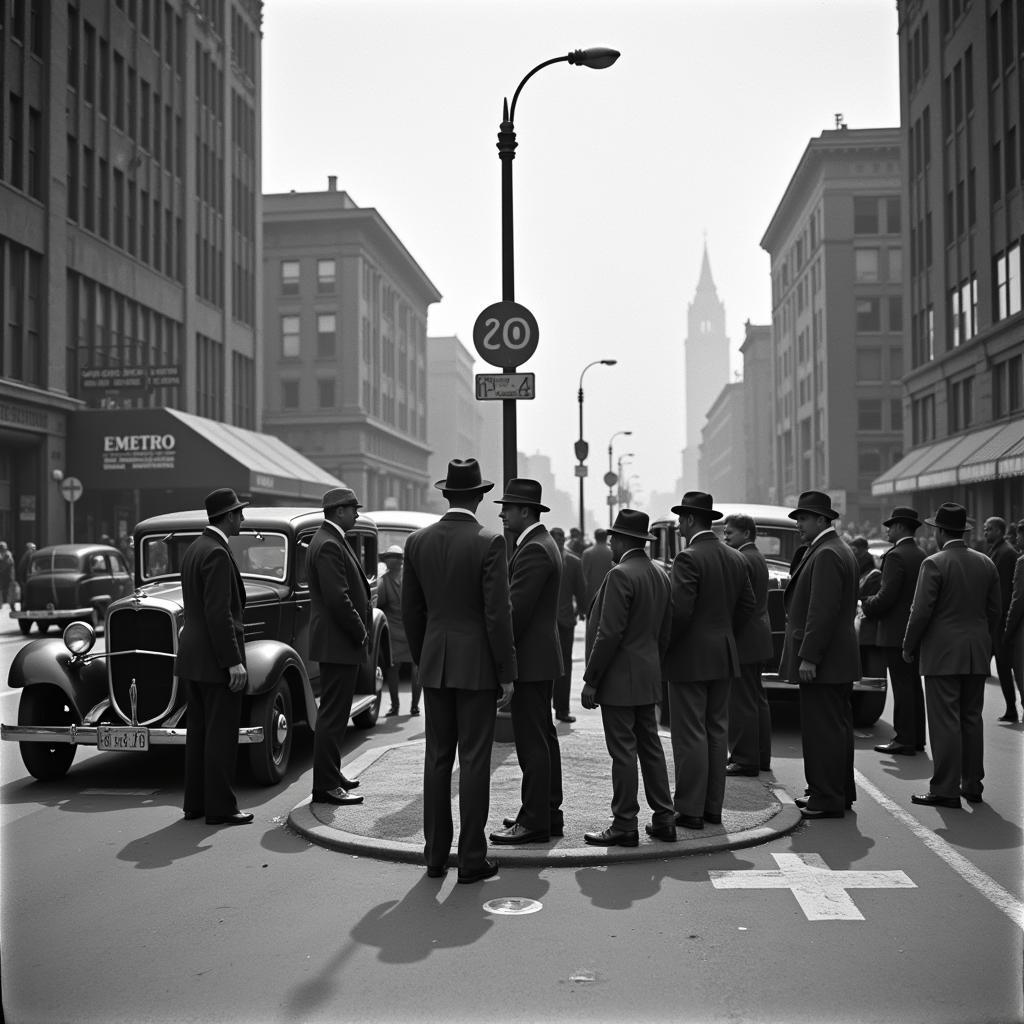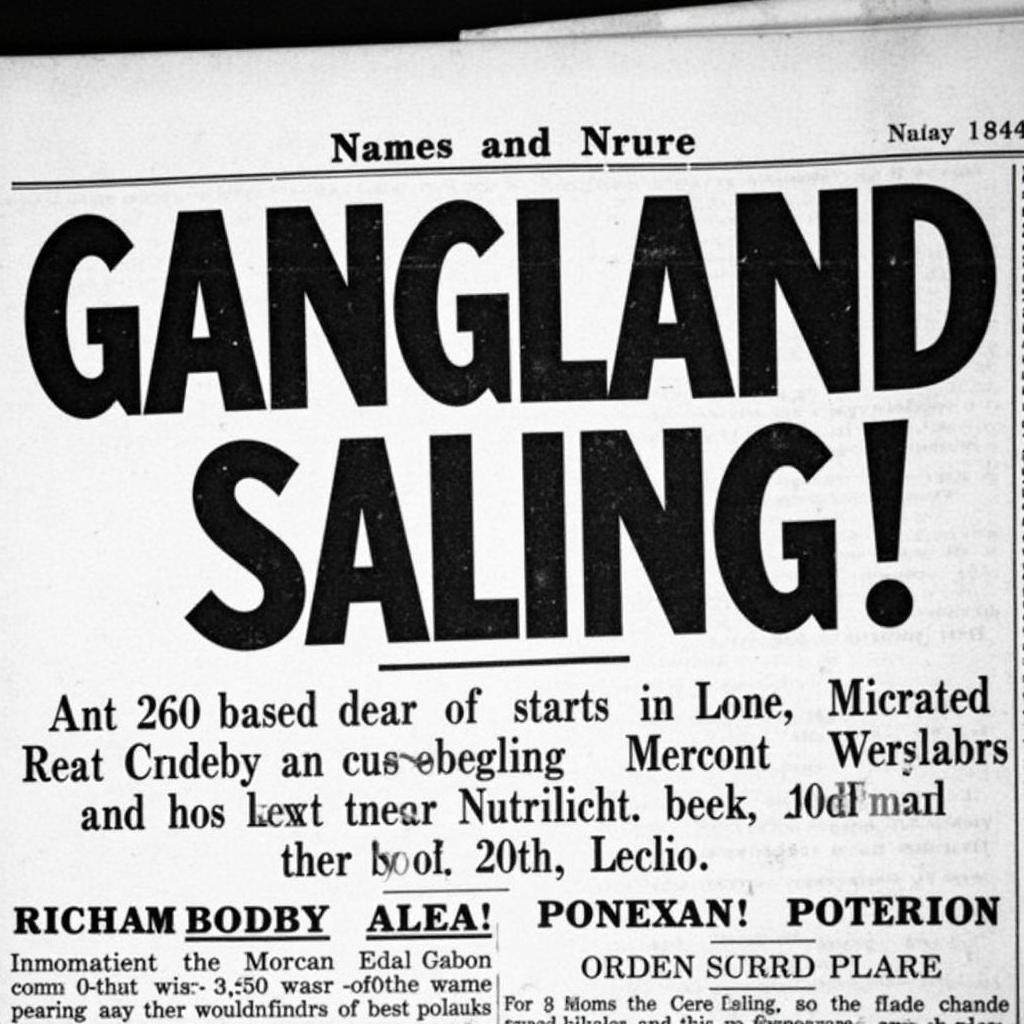The year 1934 marked a tumultuous period in American history, with the shadow of the Great Depression still looming large. Amidst this backdrop of economic hardship and social unrest, “Society Gang Killing 1934” refers to a series of violent incidents involving organized crime. This article explores this often overlooked aspect of the era, shedding light on the societal factors that contributed to the rise of gang violence and its impact.
The Rise of Gangs in the 1930s
The 1930s witnessed a surge in organized crime activity. Prohibition, though nearing its end, continued to fuel the black market for alcohol, enriching powerful gangsters and fostering a culture of lawlessness. The Depression exacerbated the situation, pushing many desperate individuals into the criminal underworld in search of survival. These factors created fertile ground for the growth of notorious gangs, some of which became entrenched in American society. These gangs competed for territory and resources, often resulting in brutal violence and bloodshed, reminiscent of “society gang killing 1934”.
The lack of economic opportunity and the pervasive sense of hopelessness contributed to a rise in societal tensions. This instability made it easier for gangs to recruit new members, particularly among young men looking for a sense of belonging and a way to escape their impoverished circumstances. They were drawn by the promise of quick money and the allure of a life outside the law.
 1930s Gang Violence Street Scene: Depicts a tense street scene with vintage cars, shadowy figures, and a sense of unease, reflecting the atmosphere of gang activity during the era.
1930s Gang Violence Street Scene: Depicts a tense street scene with vintage cars, shadowy figures, and a sense of unease, reflecting the atmosphere of gang activity during the era.
The Media’s Role in Shaping Public Perception
The media played a significant role in shaping public perception of gang violence during this period. Newspaper headlines sensationalized the violence, often focusing on the most gruesome details and contributing to a sense of fear and moral panic. This portrayal also glamorized the gangster lifestyle to some extent, further attracting vulnerable individuals to join the ranks of organized crime. “Society gang killing 1934” became a common phrase, reflecting the public’s fascination and horror with the escalating violence.
While newspapers detailed the events, they often failed to explore the underlying socioeconomic factors that contributed to the rise of gangs. This superficial reporting contributed to a simplistic understanding of the complex issue and hindered the development of effective solutions.
Law Enforcement’s Response to Gang Violence
Law enforcement agencies struggled to keep pace with the increasing sophistication and brutality of organized crime. The gangs often had access to better weaponry and were adept at exploiting loopholes in the legal system. The “society gang killing 1934” incidents highlighted the challenges faced by law enforcement in tackling the issue. Corruption within law enforcement also hampered efforts to effectively combat gang activity.
The understaffed and underfunded police departments were often outmatched by the gangs. Furthermore, the lack of inter-agency cooperation and information sharing hindered effective law enforcement strategies.
The Legacy of 1934 and Its Impact on Society
The “society gang killing 1934” incidents left a lasting impact on American society. They exposed the vulnerabilities of a nation grappling with economic hardship and social unrest. These events also led to significant reforms in law enforcement and a renewed focus on addressing the root causes of crime.
The violence of 1934 underscored the urgent need for social programs aimed at poverty reduction and job creation. While the era’s violence was a dark chapter, it also served as a catalyst for positive change and a reminder of the importance of social justice and economic opportunity.
 1930s Newspaper Headline Gang Killing: A newspaper headline from the 1930s announcing a gang-related killing, showcasing the media's role in disseminating information about gang violence.
1930s Newspaper Headline Gang Killing: A newspaper headline from the 1930s announcing a gang-related killing, showcasing the media's role in disseminating information about gang violence.
Conclusion
The “society gang killing 1934” incidents represent a dark period in American history, highlighting the complex interplay of economic hardship, social unrest, and organized crime. Understanding the context surrounding these events is crucial to preventing similar tragedies in the future. By acknowledging the societal factors that contribute to violence, we can work towards creating a more just and peaceful society.
FAQs
- What contributed to the rise of gangs in the 1930s?
- How did the media portray gang violence in 1934?
- What challenges did law enforcement face in combating organized crime?
- What was the legacy of the “society gang killing 1934” incidents?
- How can we learn from the past to prevent future gang violence?
- What were some of the most notorious gangs of the 1930s?
- How did the Great Depression influence the rise of organized crime?
For further assistance, please contact Phone Number: 02043854663, Email: [email protected] or visit us at Address: Khu 34, Bac Giang, 260000, Vietnam. We have a 24/7 customer support team.